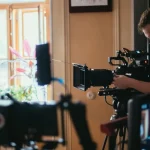Editing is a process that many writers find daunting. If you are here, it means that you might have completed your first draft, and now you are looking for inspiration to self-edit before sending your manuscript to a professional editor.
Firstly, you should know that completing the first draft is a massive accomplishment, and you should be incredibly proud of yourself. Now, the question is what to do with your first draft now. The chances are high that your first draft is a complete mess.
But first drafts are supposed to be messy and far from perfect.
Here is how to revise your first draft.
Take Some Time Off
Before you start to revise your draft, you should know that you need decompression time, which is the time off that you need to set a gap between the time you complete your draft and the time you start to edit it.
The thing is that you cannot jump into revisions right away. The reason why you cannot do it is because you are too close to it. When you have completed the first draft, you are closely acquainted with your manuscript, which is why you are not going to be able to look at it objectively. So, take a much-deserved break so that you can distance yourself from it for at least three months.
Stage 1: Revisions
You need a strategy to revise your draft. You need to have a plan and an idea so that you know what you are looking for in the perfect revised draft. So, it is important to ask yourself a few questions about your manuscript:
- What do I love about the story that I have written?
- What are the potential problems that I might encounter?
- Why does the story matter to me?
- How will my characters change throughout the story?
Once you have truthfully answered these questions, you know what exactly you are looking for when going through the vision process, by answering the questions, you can also remind yourself about your ultimate vision for your book.
We also recommend printing out your manuscript while you are revising your draft so that you can save yourself from the eye strain that it takes when constantly working on the computer. By editing on paper, you can also deliberately cut and edit scenes, which is much more freeing about having your story out on paper and being able to scroll over it. Editing on paper gives you way more freedom than editing inside a Word document.
During the revision stage of your manuscript, you can make the main adjustments to the plot and characters.
Stage #2: Line Editing
After you have done all of your revisions, you can move on to the next stage, which is line editing. Now, line editing is probably the least enjoyable part of the entire editing process. This is the part where you will be going through your manuscript with a magnifying glass and looking through everything, such as passive voice, excessive adverbs, continuity errors, weak words, grammar, etc.
These are all the sorts of things that you don’t necessarily pay attention to in the revision process. The reason why you need a strategy when it comes to self-editing is that you cannot do everything all at once, So it might be in your best interest to revise the manuscript phase while keeping the objective and overall plot of the story in mind.
In the subsequent phase, you should focus on line editing. The thing is that if you are distracted while trying to make a sentence sound better – you might be oblivious to the fact that the entire scene isn’t working.
Also, doing line edits when you are in the middle of the revision process will make it feel like you are decorating the house before the sheetrock even goes up. It doesn’t work, which is why you will want to focus on the big tasks first before you zoom into the details.
Stage #3: Get Valuable Feedback
Once you have completed the basic aspects of self-editing, it is time to get the much-needed feedback. After the daunting task of line editing, you might have thought that your work is all done and that you can now proceed to self-publishing, but the truth is that there is still a lot that needs to be done.
You are nowhere in the position to get your book published. At least not quite yet. Before you send your book out for publication, you should want to get objective opinions from your friends, family, and beta readers.
The point of getting objective feedback is that it will help you establish whether or not you can improve your story. As a matter of fact, the entire objective of self-editing and even hiring editors, such as an editor for children’s books, if you are working on a children’s book, is to see how and where you can improve your story.
The point of editing is to get your story in the best format and essence possible so that your ideal readers truly enjoy reading the book. Ideally, you want to make your story more emotional, more engaging, and more memorable.
So, keep looking for the answers to the questions that we mentioned in the first stage so that you have the best version of your book ready when it is time to hit the publication button. It is important to mention that the people from whom you will get the feedback should be brutally honest with the feedback.
They don’t necessarily have to be writers, but they should have a general understanding of what your book is about.
The Takeaway
When it comes to editing your manuscript, there is only so much that you can do yourself. There comes a time when you will need a professional’s perspective to ensure that your book reads as smoothly as possible. On that note, before finalizing your manuscript, you should find a professional editor for that specific genre – someone who understands your vision and your voice. By getting a professional editor and proofreader, you can get the much-needed help to bring your book to another whole level of greatness.






